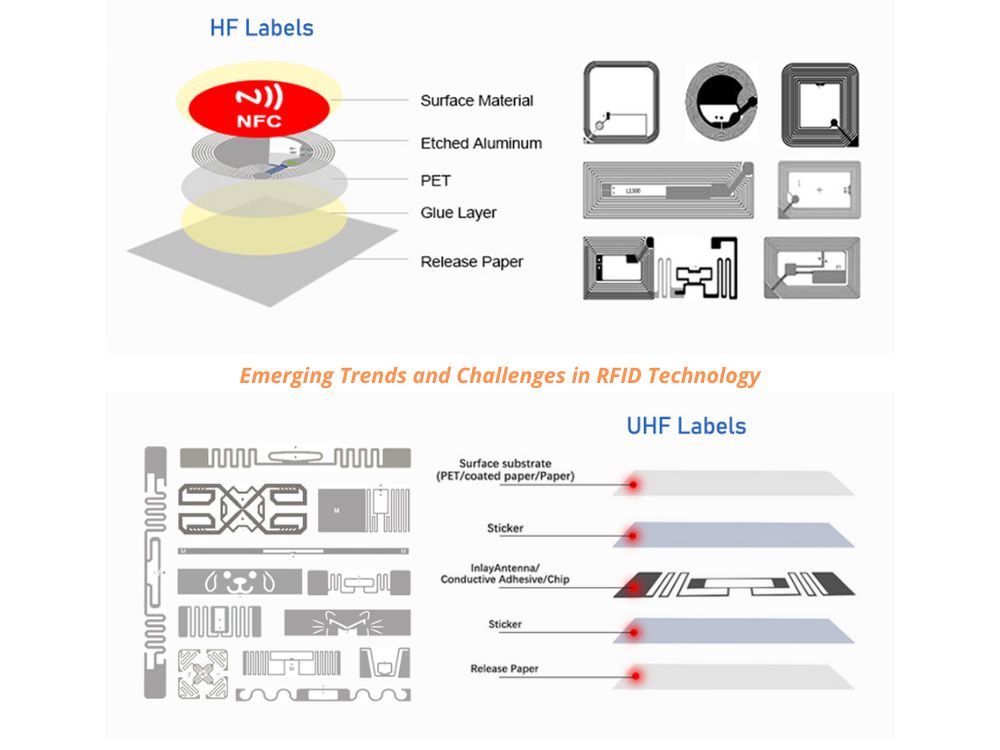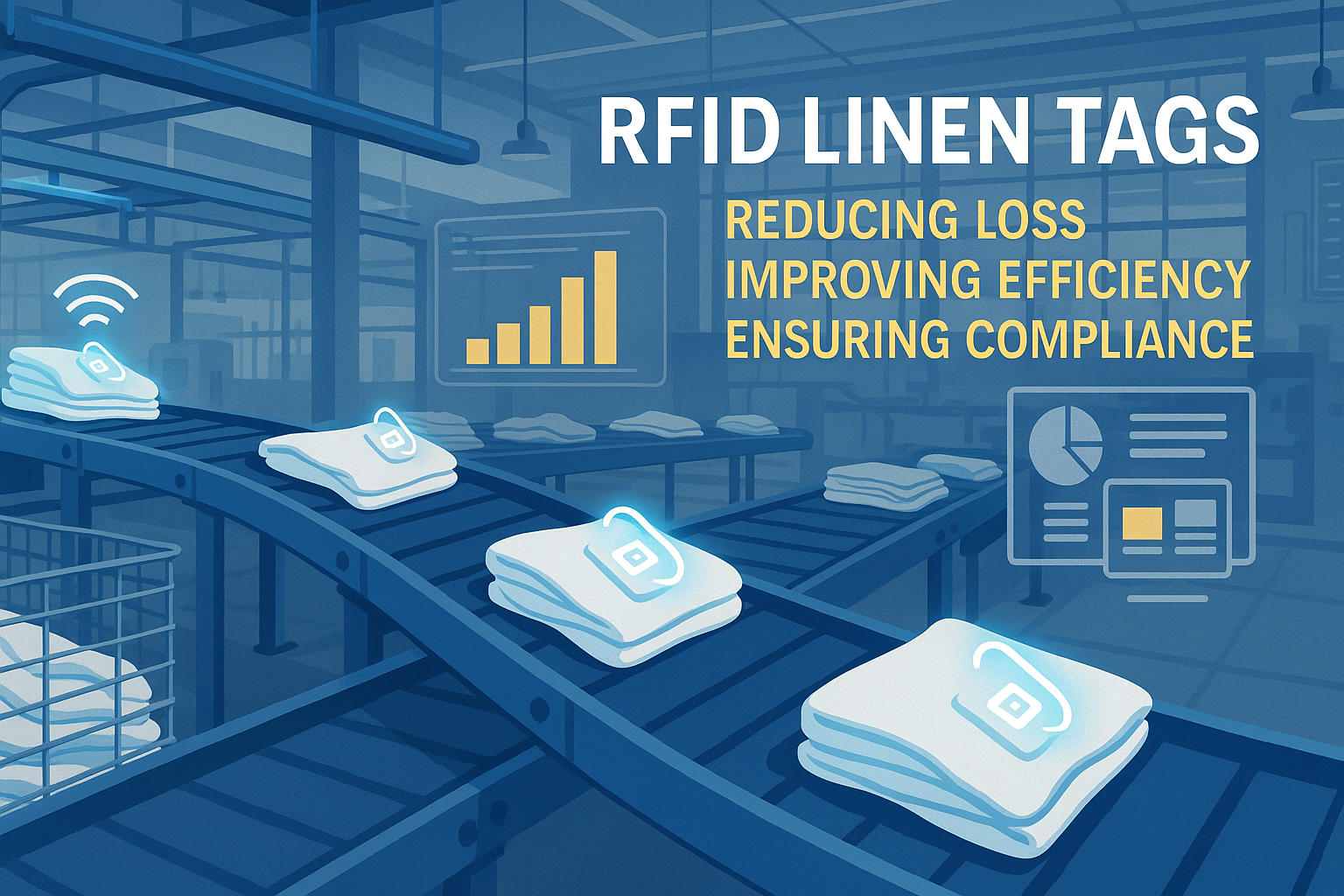
Emerging Trends and Challenges in RFID Technology
Table of Contents
Summary
This article outlines the latest trends driving RFID innovation and the critical challenges that the industry must address. As RFID technology becomes increasingly integral to modern applications, understanding these trends and challenges is essential for leveraging its full potential.

Summary of RFID Trends and Challenges
RFID technology is witnessing significant growth and adoption across diverse applications, from touchless interactions to advanced logistics management. The industry’s trajectory is shaped by several key trends, such as the rise of UHF tags and their application in vaccine safety, alongside challenges including high costs and technological limitations. This article explores these aspects in detail, providing insights into how RFID is reshaping industries and the hurdles it faces.
Key Trends in RFID Technology
Rapid Growth of UHF Tags
UHF (Ultra High Frequency) RFID tags are emerging as the fastest-growing segment in the RFID market. Their popularity is driven by their superior performance characteristics, including extended read ranges of up to 150 meters and faster reading speeds compared to other frequencies. Additionally, passive UHF tags are more cost-effective, further fueling their adoption.
RFID Tag Type | Read Range | Speed | Cost |
UHF | Up to 150 meters | High | Lower |
LF | Shorter | Moderate | Higher |
HF | Moderate | Moderate | Moderate |
Enhanced Employee Credentialing
RFID technology is increasingly used for creating secure and customizable employee credentials. By moving away from traditional passwords and PINs to RFID-based authentication, organizations can enhance security and streamline access management. RFID cards, often integrated with Identity Access Management (IAM) systems, offer a seamless and secure solution.
Advancements in Vaccine Safety
The COVID-19 pandemic has underscored RFID’s critical role in vaccine management. RFID tags are employed to track vaccine doses, ensuring proper handling and reducing the risk of expired or counterfeit vaccines. For instance, RFID technology has been used to monitor vaccine storage conditions and manage inventory effectively, as demonstrated by Reading Hospital’s use of RFID for COVID-19 vaccine tracking.
Expansion of Touchless Interactions
The demand for touchless interactions has accelerated due to health and safety concerns. RFID technology supports contactless payments and transactions, significantly reducing physical contact. Retailers and other sectors are utilizing RFID for enhanced inventory management and streamlined checkout processes, reflecting a broader shift towards touchless solutions.
Optimization of Logistics and Supply Chain
RFID is becoming a pivotal tool in logistics and supply chain management. The technology facilitates real-time tracking of cargo and environmental conditions during shipment. By enabling accurate monitoring and optimization, RFID helps reduce costs and improve efficiency across the supply chain.
Smart Shelving and Checkout Systems
Retailers are increasingly adopting RFID-driven smart shelving and automated checkout systems. RFID technology enables real-time inventory tracking and has led to innovations such as automated checkout processes, where customers can simply walk out of the store with their purchases.
Challenges Facing the RFID Industry
Cost Considerations
Despite the advantages, the cost of implementing RFID systems remains a significant barrier. The initial investment in RFID readers, software, and tags can be substantial. However, as technology advances and prices decrease, the long-term benefits often outweigh the initial costs.
Technological Complexity
RFID technology can be complex, with various tag types and frequencies to consider. This complexity can lead to confusion and potential misinvestment by businesses unfamiliar with the technology. Industry-wide education and expert consultation are crucial to ensure successful RFID implementation.
Performance Issues with Metals and Liquids
RFID systems can face challenges when interacting with metals and liquids, which can interfere with signal transmission. Although some RFID tags are designed to work in these environments, ongoing development is needed to improve performance in such scenarios.
Collision and Interference
RFID systems must address issues related to reader and tag collisions. Interference from multiple readers or reflections can impact performance. Advances in dense reader mode and anti-collision technology are helping mitigate these challenges, but further improvements are necessary.

Conclusion
RFID technology is advancing rapidly, offering new opportunities across various industries while also facing several challenges. The trends driving RFID innovation, such as the adoption of UHF tags and touchless interactions, highlight the technology’s potential to enhance operational efficiency and user experience. However, addressing challenges related to cost, complexity, and performance is essential for maximizing the benefits of RFID. As the industry continues to evolve, staying informed about these trends and challenges will be crucial for leveraging RFID technology effectively.
Comments
Hot Products

What Is RFID Waste Management
Imagine a city where every trash bin speaks — not literally — but through a tiny chip that tells the system when it’s full, when it’s emptied, and where it went. That’s what RFID waste management is doing today.

What are Bolt Seals and their Applications? | Complete Guide
In global trade and logistics, bolt seals play a crucial role in ensuring cargo security and compliance. These small but powerful devices are designed to lock shipping containers, trailers, and cargo doors with a tamper-evident mechanism.

What is an RFID Card Protector? Benefits, Use Cases, and Buying Guide
RFID technology (Radio Frequency Identification) is everywhere: in your credit cards, ID badges, transit passes, hotel room keys, and more. It offers speed and convenience, but it also opens the door to a new kind of digital theft called “skimming.” That’s where an RFID card protector comes in.

RFID Wristbands for Events: Bulk Buying Guide for Organizers
RFID wristbands for events are becoming the go-to solution for organizers who need faster entry, fraud prevention, and cashless payments at concerts, festivals, and sports venues. Unlike paper tickets or QR codes, these smart wristbands use embedded chips to streamline access, secure transactions, and improve the guest experience.

How RFID Tag on Windscreen Improves Vehicle Access Control and Toll Systems
In today’s fast-paced world, vehicle identification needs to be quick, secure, and contactless. An RFID Tag on the Windscreen provides exactly that — a reliable way to manage toll collection, parking, and gated access without stopping vehicles.

The Benefits of RFID Linen Tags in Commercial Laundry
Managing laundry in hospitals, hotels, or large laundry services is a big job. Each day, thousands of sheets, towels, and uniforms are washed, sorted, and sent back out. But problems like lost linens, sorting mistakes, and manual counting can cost companies a lot of money. For example, mid-sized hotels can lose over $200,000 each year from missing linens.
That’s where RFID Linen Tags come in.
Tags
RELATED BLOGS

What Is RFID Waste Management
Imagine a city where every trash bin speaks — not literally — but through a tiny chip that tells the system when it’s full, when it’s emptied, and where it went. That’s what RFID waste management is doing today.

What are Bolt Seals and their Applications? | Complete Guide
In global trade and logistics, bolt seals play a crucial role in ensuring cargo security and compliance. These small but powerful devices are designed to lock shipping containers, trailers, and cargo doors with a tamper-evident mechanism.

What is an RFID Card Protector? Benefits, Use Cases, and Buying Guide
RFID technology (Radio Frequency Identification) is everywhere: in your credit cards, ID badges, transit passes, hotel room keys, and more. It offers speed and convenience, but it also opens the door to a new kind of digital theft called “skimming.” That’s where an RFID card protector comes in.




